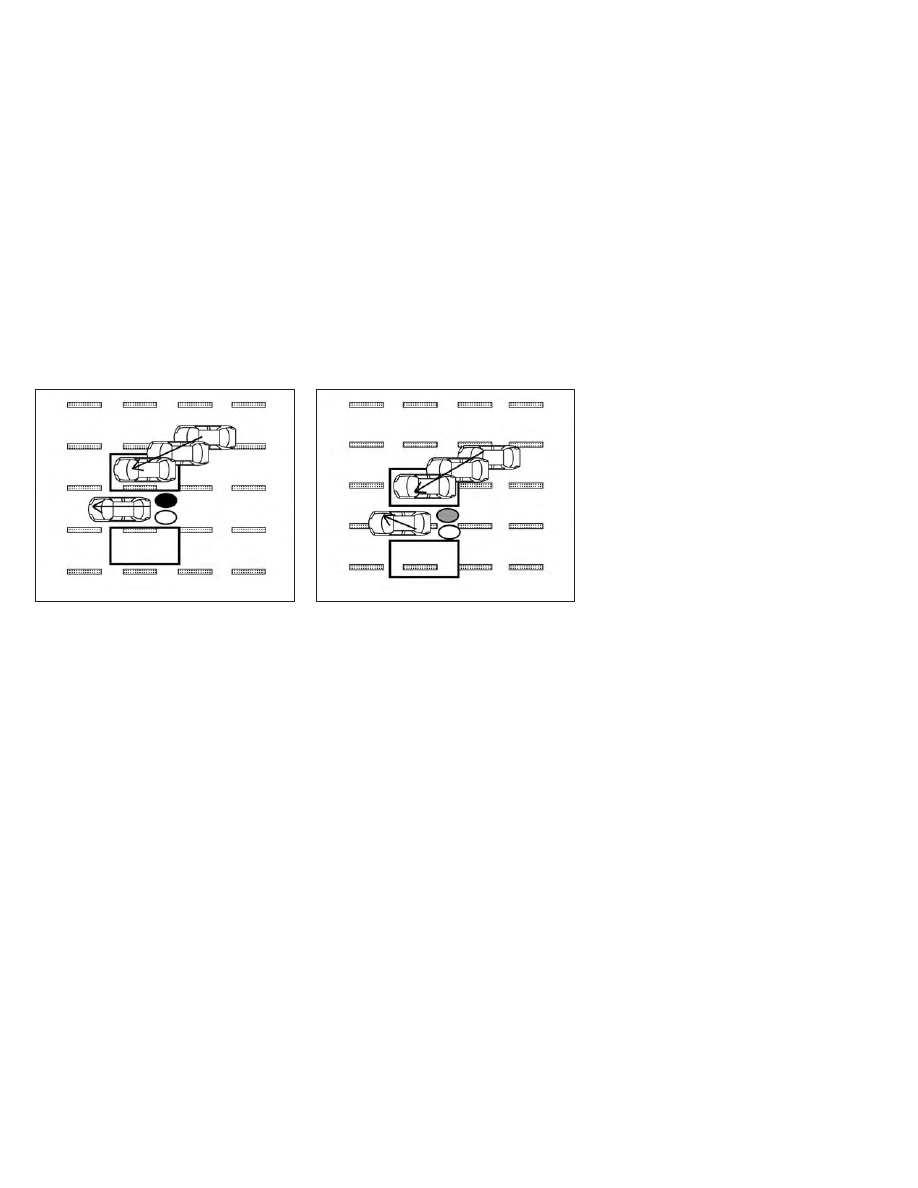Nissan Murano (2022 year). Manual in english - page 18

Entering from the side
Illustration 5:
The side BSW/RCTA indicator
light illuminates if a vehicle enters the de-
tection zone from either side.
Illustration 6:
If the driver activates the
turn signal while another vehicle is in the
detection zone, then the system chimes
(twice) and the side BSW/RCTA indicator
light flashes.
NOTE:
• If the driver activates the turn signal
before a vehicle enters the detection
zone, the side BSW/RCTA indicator
light will flash but no chime will sound
when the other vehicle is detected.
• The radar sensors may not detect a ve-
hicle which is traveling at about the
same speed as your vehicle when it en-
ters the detection zone.
LSD2305
Illustration 5 – Entering from the side
LSD2308
Illustration 6 – Entering from the side
5-44
Starting and driving